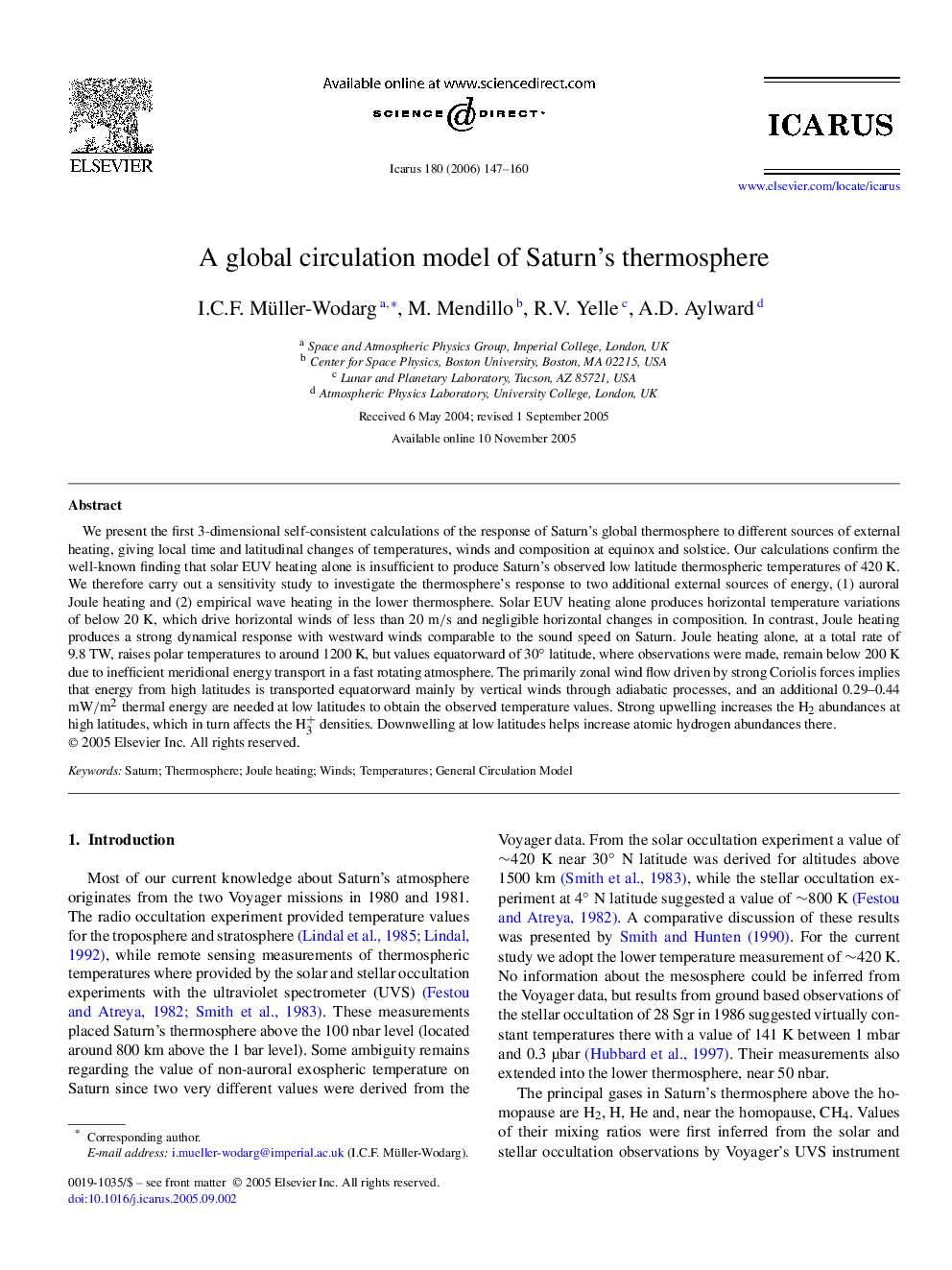| Article ID | Journal | Published Year | Pages | File Type |
|---|---|---|---|---|
| 1776026 | Icarus | 2006 | 14 Pages |
We present the first 3-dimensional self-consistent calculations of the response of Saturn's global thermosphere to different sources of external heating, giving local time and latitudinal changes of temperatures, winds and composition at equinox and solstice. Our calculations confirm the well-known finding that solar EUV heating alone is insufficient to produce Saturn's observed low latitude thermospheric temperatures of 420 K. We therefore carry out a sensitivity study to investigate the thermosphere's response to two additional external sources of energy, (1) auroral Joule heating and (2) empirical wave heating in the lower thermosphere. Solar EUV heating alone produces horizontal temperature variations of below 20 K, which drive horizontal winds of less than 20 m/s and negligible horizontal changes in composition. In contrast, Joule heating produces a strong dynamical response with westward winds comparable to the sound speed on Saturn. Joule heating alone, at a total rate of 9.8 TW, raises polar temperatures to around 1200 K, but values equatorward of 30° latitude, where observations were made, remain below 200 K due to inefficient meridional energy transport in a fast rotating atmosphere. The primarily zonal wind flow driven by strong Coriolis forces implies that energy from high latitudes is transported equatorward mainly by vertical winds through adiabatic processes, and an additional 0.29–0.44 mW/m2 thermal energy are needed at low latitudes to obtain the observed temperature values. Strong upwelling increases the H2 abundances at high latitudes, which in turn affects the H+3 densities. Downwelling at low latitudes helps increase atomic hydrogen abundances there.
